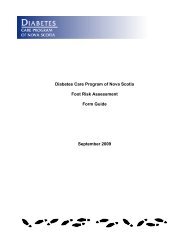CDE Appendix 1 Literature Review - Central East Local Health ...
CDE Appendix 1 Literature Review - Central East Local Health ...
CDE Appendix 1 Literature Review - Central East Local Health ...
You also want an ePaper? Increase the reach of your titles
YUMPU automatically turns print PDFs into web optimized ePapers that Google loves.
The Culture, Diversity and Equity Project: <strong>Literature</strong> <strong>Review</strong><br />
Box 4.8: Tracking <strong>Health</strong>y People 2010<br />
Launched in 2000, ‘<strong>Health</strong>y People 2010’ is a Federal US public health policy and plan developed by the Department of <strong>Health</strong><br />
and Human Services (DHHS) with two primary goals in mind: “to eliminate health disparities among specific segments of<br />
the population” and “to increase quality and years of health life”. These goals inform the policy’s 467 objectives which are<br />
organized into 28 focus areas. A selected set of 10 objectives – physical activity, overweight and obesity, tobacco use,<br />
substance abuse, responsible sexual behaviour, mental health, injury and violence, environmental quality, immunization, and<br />
access to health care - known as the Leading <strong>Health</strong> Indicators, form part of a larger ‘tracking’ program that sets targets and<br />
assesses the progress toward its objectives.<br />
The National Center for <strong>Health</strong> Statistics (NCHS) is responsible for coordinating the effort to monitor the Nation's progress toward<br />
the targets, using data from NCHS data systems as well as from more than 190 different other data sources, from more than<br />
seven Federal Government Departments (including <strong>Health</strong> and Human Services, Commerce, Education, Justice, Labor,<br />
Transportation, and the Environmental Protection Agency), and from voluntary and private non-governmental organizations. To<br />
the extent appropriate, data for the objectives are provided for subgroups defined by relevant dimensions such as sociodemographic<br />
subgroups of the population, health status, or geographic classifications.<br />
Data are made available through DATA2010, an interactive database system accessible through the NCHS web site and the<br />
CDC WONDER system.<br />
Source: www.healthypeople.gov/About/ (Retrieved March 3, 2009)<br />
E. <strong>Health</strong> Equity Impact Assessment<br />
Ongoing evaluation and assessment of policy initiatives, programs and services for their health equity impact is<br />
particularly critical to ensuring effective, efficient and equitable programs and services and accountability for the<br />
latter. <strong>Health</strong> Equity Impact Assessment tools, as currently used by various health authorities in the UK, Australia<br />
and New Zealand, are of particular usefulness in this respect (see Department of <strong>Health</strong>, 2008a, 2008b [UK];<br />
London <strong>Health</strong> Commission, 2008; Rangahau and Pomare, 2003 [New Zealand]; Simpson, 2005 [Australia];<br />
Ritsatakis et al. 2002 [Europe]). <strong>Health</strong> Canada has adopted Frankish et al.’s (1996) definition of <strong>Health</strong> Impact<br />
Assessment as “any combination of procedures or methods by which a proposed policy or program may be judged<br />
as to the effect(s) it may have on the health of a population”.<br />
While health impact assessments (HIAs) have a longer history, with origins in environmental impact assessment and<br />
healthy public policy (see for instance <strong>Health</strong> Canada 1994), health equity focused impact assessments (also known<br />
as equity audits) have more recent origins in the UK, owing in part to that countries legislated ‘duties’ around<br />
equality, which include requirements to assess policies for their impact on various diversity groups.<br />
The UK Department of <strong>Health</strong> describes health equity impact assessments as “appraisals of the impact of policies<br />
or interventions on health disparities” (2002). <strong>Health</strong> equity impact assessments were a major recommendation of<br />
the Acheson Inquiry (1998) and have since been operationalized in numerous jurisdictions around the world, most<br />
notably, at present, Australia, New Zealand and the UK (see Box 3.4, 3.5, 3.6 and Box 4.9 and Box 4.10 for more on<br />
Australian, UK and New Zealand uses of such Impact Assessment Tools). Canada has developed a similar genderspecific<br />
methodological tool - Gender-Based Analysis (GBA) - for assessing the gender impact of policies,<br />
programs and services (see <strong>Health</strong> Canada, 2000).<br />
According to an international (‘Gothenburg’) consensus paper deriving from an international seminar in Manchester<br />
in June 2000, HIA includes “consideration of evidence about the anticipated relationships between a proposed<br />
policy or project and the health of a population and of the opinions, experience and expectations of those who may<br />
be affected.<br />
It aims to provide more informed understanding by decision-makers and the public regarding the effects of the<br />
proposed policy, and to propose adjustments and options to maximize positive and minimize negative health<br />
impacts” (Gothenburg, 2001; as paraphrased by Ritsatakis et al., 2002).<br />
93

















